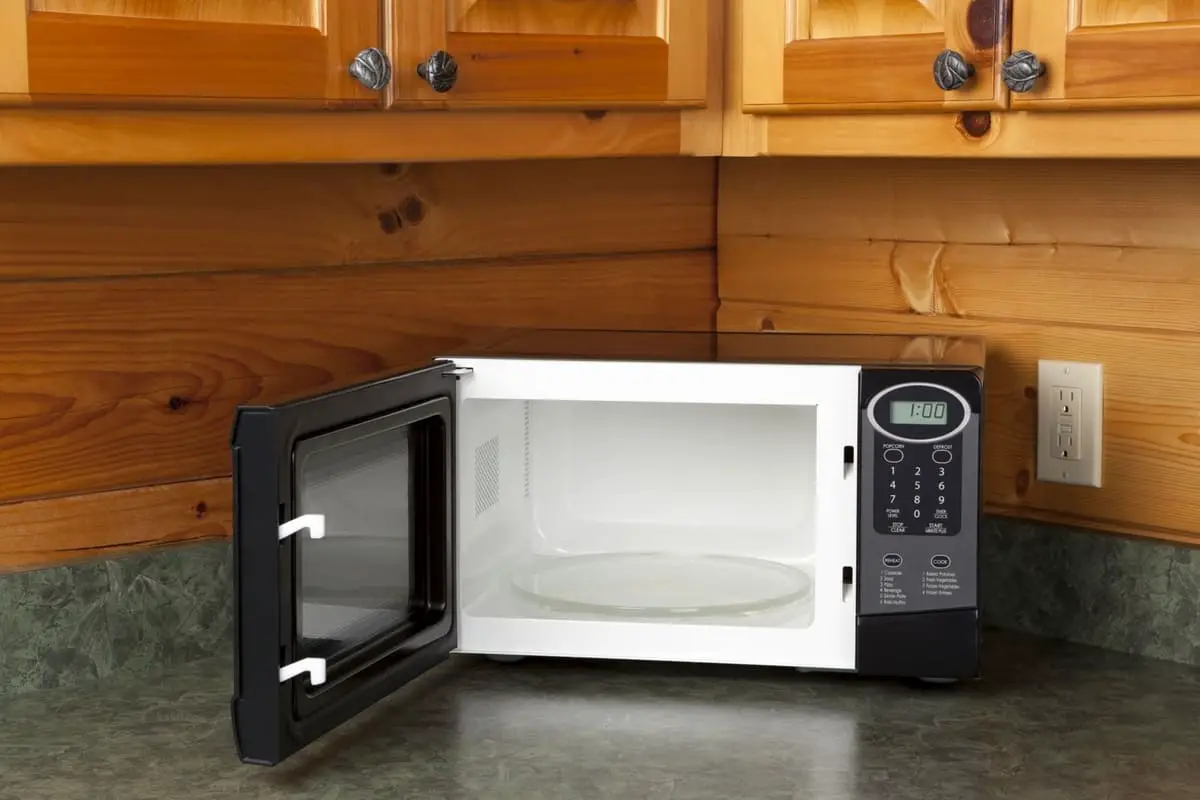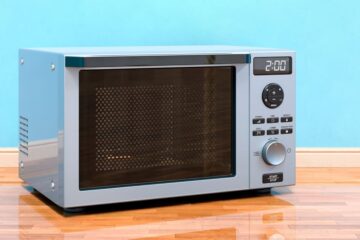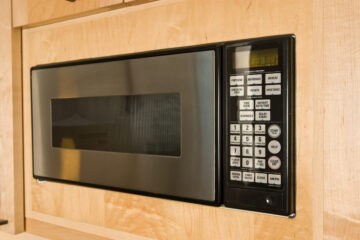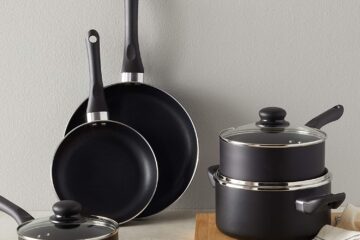When it comes to selecting a microwave oven, one of the critical factors to consider is wattage. Microwave wattage refers to the amount of power the microwave uses to cook food. Wattage can impact cooking times, the quality of food cooked, and energy efficiency. However, with a wide range of wattages available in the market, it can be challenging to determine the best wattage for your cooking needs. In this article, we’ll take a comprehensive look at the relationship between microwave wattage and cooking performance, helping you make an informed decision when purchasing your next microwave oven.
Microwave Wattage Basics
Defining Wattage
Wattage is a measure of the microwave’s power output. The higher the wattage, the more powerful the microwave. This means that higher wattage microwaves can cook food faster and more efficiently than lower wattage ones.
Microwave Wattage Range
Microwaves are available in a wide range of wattages, from as low as 600 watts to as high as 1200 watts or more. Lower wattage microwaves are often less expensive but may take longer to cook food. Higher wattage microwaves are typically more expensive but can cook food faster and more evenly.
How to Measure Microwave Wattage?
To measure the wattage of your microwave, you can check the owner’s manual or look for a label on the back of the microwave. Another way to measure the wattage is to use a microwave wattage tester, which is available at most kitchen supply stores.
Common Wattage Levels in Microwaves
Microwaves are generally available in four different wattage levels: 600-800 watts, 800-1000 watts, 1000-1200 watts, and over 1200 watts. Each wattage level has its advantages and disadvantages, depending on your cooking needs.
Microwave Cooking and Wattage
What Wattage is Best for Cooking Certain Foods?
The wattage you need for cooking certain foods depends on the type of food and how you plan to cook it. For example, if you’re cooking popcorn, a high wattage microwave will help the popcorn pop faster and more evenly. On the other hand, if you’re cooking meat, a lower wattage microwave will help the meat cook more evenly and retain its moisture.
How Wattage Affects Cooking Times?
Wattage can impact cooking times significantly. Higher wattage microwaves can cook food faster, while lower wattage microwaves can take longer to cook food. As a general rule of thumb, for every 100 watts of power, cooking time is reduced by 15-20 seconds.
Microwaving Frozen Foods and Wattage Considerations
When cooking frozen foods in the microwave, a higher wattage microwave is generally better. This is because frozen foods tend to require more power to cook than fresh foods. A higher wattage microwave can help cook frozen foods more evenly and quickly.
Wattage vs. Capacity: Which Matters More?
Wattage vs. Size: Finding the Perfect Balance
When selecting a microwave, it’s essential to find the right balance between wattage and size. A larger microwave with a lower wattage may take longer to cook food, while a smaller microwave with a higher wattage may not have enough space to cook larger items.
Is High Wattage Better for Larger Microwaves?
A high wattage microwave is generally better for larger microwaves, as it can cook food more quickly and efficiently. However, if you don’t plan to cook large items often, a lower wattage microwave may be more appropriate for your needs. It’s important to consider the balance between wattage and capacity when choosing a microwave.
If you have a larger microwave and plan to cook big items like whole chickens or turkeys, a high wattage microwave will be able to cook them more quickly and evenly. On the other hand, if you mostly use your microwave for reheating leftovers or cooking smaller items, a lower wattage microwave may be a better choice.
It’s also worth noting that larger microwaves often have more features and settings that require higher wattage to operate. For example, a microwave with a convection setting or a grill function will require higher wattage to achieve the desired cooking results.
When choosing a microwave, consider the size of your family and the types of food you typically cook. If you have a large family and plan to cook big items frequently, a high wattage microwave with a large capacity may be the best option for you. On the other hand, if you live alone or mostly use your microwave for reheating leftovers, a lower wattage microwave with a smaller capacity may be more appropriate.
It’s important to find the right balance between wattage and capacity to ensure that your microwave meets your cooking needs while also being energy-efficient and cost-effective.
Pros and Cons of High and Low Wattage Microwaves
There are pros and cons to both high and low wattage microwaves, and the right choice for you will depend on your individual needs and preferences.
High wattage microwaves are generally better for cooking large items quickly and evenly. They also tend to have more features and settings, which can make them more versatile and useful in the kitchen. However, high wattage microwaves can also be more expensive to operate and may require more energy to run.
Low wattage microwaves, on the other hand, are generally more affordable and energy-efficient. They may take longer to cook food, but they can be a good choice for people who mostly use their microwave for reheating leftovers or cooking smaller items.
It’s important to consider your individual needs and preferences when choosing between a high or low wattage microwave. If you frequently cook large items or use your microwave for a variety of tasks, a high wattage microwave may be the best option for you. However, if you mostly use your microwave for basic tasks like reheating leftovers, a low wattage microwave may be more appropriate.
The Benefits of Adjustable Wattage Microwaves
Adjustable wattage microwaves are becoming increasingly popular as they allow you to choose the appropriate wattage level for the food you’re cooking. This can be particularly useful for items that require more gentle cooking, such as fish or vegetables.
By adjusting the wattage level, you can ensure that your food is cooked evenly and thoroughly without overcooking or drying out. This can help you achieve better results and ensure that your food is both delicious and nutritious.
Another benefit of adjustable wattage microwaves is that they can be more energy-efficient. By choosing a lower wattage level, you can reduce your energy consumption and save money on your electricity bill.
Factors to Consider When Choosing Microwave Wattage
When choosing a microwave, there are several factors to consider to ensure that you select the right wattage level for your needs. Some of the most important factors to consider include:
- Your cooking needs and habits
- The type of food you cook most often
- How many people you typically cook for
- Power consumption and energy efficiency
By taking these factors into consideration, you can choose a microwave that meets your cooking needs while also being energy-efficient and cost-effective.
Can You Change the Wattage of Your Microwave?
While you can’t increase the wattage of your microwave, you can adjust the wattage level to suit your cooking needs. Most microwaves come with adjustable wattage settings that allow you to lower or increase the power output. By adjusting the wattage, you can ensure that your food cooks evenly and avoid overcooking or undercooking.
To adjust the wattage of your microwave, consult the user manual to see if it has a wattage control feature. Some microwaves have a dedicated button for this purpose, while others require you to navigate through the settings menu. Once you find the wattage control feature, you can select the desired wattage level based on your cooking needs.
It’s important to note that changing the wattage of your microwave can affect cooking times and results. For example, if you lower the wattage, your food may take longer to cook. Similarly, if you increase the wattage, your food may cook faster, but there is a higher risk of overcooking or burning it. Therefore, it’s important to experiment with different wattage settings to find the optimal level for your cooking needs.
The Pros and Cons of High and Low Wattage
As with any kitchen appliance, there are pros and cons to both high and low wattage microwaves. Here are some of the benefits and drawbacks of each:
Pros of Low Wattage Microwaves:
- Energy-efficient: Low wattage microwaves consume less power, which can save you money on your energy bills.
- Budget-friendly: Low wattage microwaves are often less expensive than high wattage models, making them a good choice for those on a tight budget.
- Safer: Low wattage microwaves are less likely to cause fires or burns, as they generate less heat.
Cons of Low Wattage Microwaves:
- Slower cooking times: Low wattage microwaves take longer to cook food, which can be frustrating if you’re in a hurry.
- Limited cooking options: Low wattage microwaves may not have the power to cook certain types of food or cook them to the desired level of doneness.
- Less versatile: Low wattage microwaves may not be suitable for cooking large or complex dishes.
Pros of High Wattage Microwaves:
- Faster cooking times: High wattage microwaves can cook food more quickly and efficiently, which can be a time-saver in busy households.
- Versatile: High wattage microwaves can cook a wider range of foods and are better suited for larger or more complex dishes.
- More power: High wattage microwaves can generate more heat, which can result in more even cooking and better browning.
Cons of High Wattage Microwaves:
- More expensive: High wattage microwaves are often more expensive than low wattage models, which may not be feasible for those on a tight budget.
- Risk of overcooking or burning: High wattage microwaves can be more powerful, which can increase the risk of overcooking or burning food.
- Safety concerns: High wattage microwaves can generate more heat, which can be a fire hazard if not used properly.
The Benefits of Adjustable Wattage Microwaves
As mentioned earlier, adjustable wattage microwaves allow you to customize the power output to suit your cooking needs. Here are some of the benefits of having an adjustable wattage microwave:
- Versatility: Adjustable wattage microwaves can handle a wider range of foods and cooking methods than fixed wattage models.
- Energy-efficient: By lowering the wattage, you can reduce your energy consumption and save on your electricity bills.
- Precision cooking: You can cook foods at a lower wattage to ensure even cooking and prevent overcooking or burning.
- Flexibility: With an adjustable wattage microwave, you have more flexibility when it comes to meal planning and preparation. For example, if you need to defrost a food item, you can use a lower wattage to prevent partial cooking.
- Cost-effective: Adjustable wattage microwaves can be more cost-effective in the long run since you can adjust the wattage to suit your needs, which can save you money on energy consumption.
It’s worth noting that not all microwaves have adjustable wattage settings, so be sure to check the product specifications before making a purchase.
Factors to Consider When Choosing Microwave Wattage
Now that you understand the basics of microwave wattage and its impact on cooking, it’s important to consider a few key factors when choosing the right wattage for your needs. Here are some things to keep in mind:
Your cooking needs and habits: Consider the types of foods you cook most often and your preferred cooking methods.
Do you frequently cook large items or use your microwave for defrosting or reheating only? These factors can help you determine the ideal wattage for your needs.
The type of food you cook most often: Certain foods require more power than others to cook properly. For example, cooking frozen foods or foods with high water content will require more wattage than reheating leftovers.
How many people you typically cook for: If you have a larger family or frequently entertain guests, you may want to consider a higher wattage microwave to handle larger food items or cooking batches of food more quickly.
Power consumption and energy efficiency: Higher wattage microwaves consume more energy and may be less energy-efficient than lower wattage models. Consider your energy usage and the impact on your electricity bills when choosing a microwave.
Conclusion
In conclusion, the wattage of your microwave plays a significant role in its cooking capabilities and safety. Higher wattage microwaves are better suited for larger items and can cook food more quickly, but they also come with potential safety risks. Adjustable wattage microwaves provide more versatility and energy efficiency. It’s important to keep safety precautions in mind when using a microwave, regardless of its wattage. By understanding how wattage affects microwave cooking and safety, you can choose the right microwave for your needs and use it safely to prepare delicious meals with ease.



